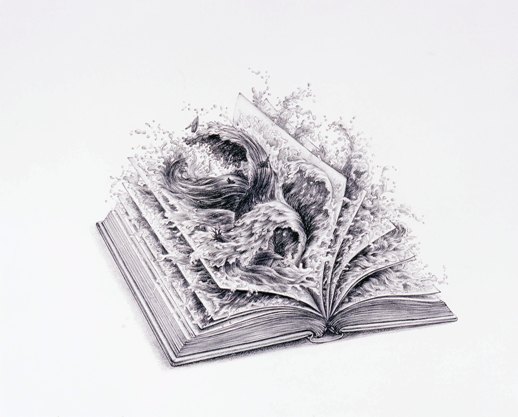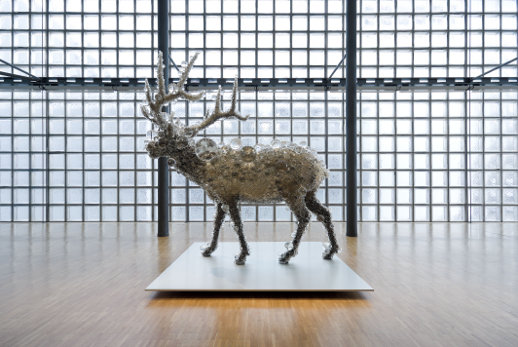An Audience with…
I’ll come straight out with it: I left Tokyo Graphic Passport feeling bitterly disappointed. Promised thought-provoking discussion involving some of the major players in the Japanese art world, there seemed to be nothing but subdued and slightly self-indulgent artists talking about the circumstances, but not the thought processes, behind their work.
I should have expected it, really. I’ve heard and read too many Western journalists interview major Japanese creatives, probing for the answer to “What is the motivation behind your work?” But their curiosity is all too often rewarded with nothing but a blank stare and a disarming, “Well, there was no particular reason I made this. I just did.” Fine if you’re a disciple of Nike philosophy, of course, but rather disappointing if you’re an internationally renowned modern artist.
To her credit, Tomoko Konoike, who opened up Sunday’s proceedings, was more interesting than those who followed her. Perhaps it had something to do with the fact that she was interviewed, which produced an actual discussion of sorts. Reflecting on her recent Opera City exhibition, based around the concept of “travelling to the centre of the earth” and a search for worldly wisdom, she described its genesis as “organic” rather than entirely planned, noting that the constraints of the gallery space dictated its layout and her choice of pieces. Filled with motifs of wolves, blood and knives, the work does seem more fitting to the rural island setting of Kirishima (an island near Kagoshima) that she later moved it to, than the white expanses of the Opera City gallery. Yet in the latter, Konoike made an effort to transform entirely the interior, strictly controlling the lighting to illuminate only the central pieces and cloaking the corridors in a stiff and murky darkness. Viewers moved through dark and supernatural landscapes of bleeding hands and skulls exhaling gold dust, before finally arriving at the “centre of the earth”, a mosaic sculpture of a baby’s head. Even without having visited the exhibition, I was able to get a sense of the atmosphere that Konoike was trying to cultivate.

Yet as to the message she was trying to transmit to her audience, she remained silent. In previous interviews she has seemed puzzled at Western symbolic interpretations of the wolves often depicted in her work. Here, she hinted at their ‘eroticism,’ but went no further into reasoning why she felt that, or why she was drawn to use them so frequently. Instead, she seemed more driven by aesthetics – “this part needed less light,” “I like the silver bit in this.”
The same would seem true for Kohei Nawa, who was up next for a solo speech. Shuffling awkwardly onto the podium, he was visibly nervous. Told to re-adjust his microphone, he spent a few minutes fiddling to bring up his website, which he then led the audience through with all the charisma of a family member taking you through their holiday snaps. “This one was in Berlin… I think I drew this in New York… this is a very early one…” He gave the disappointing, “no real reason” explanation for the thought processes behind his famous “Bead” series, where objects are covered in a thick coat of reflective glass baubles. “I, ah, started with vegetables because they were readily available and cheap. I think this cabbage was the first thing I did,” he muttered, bringing up a slide image. “By the time the exhibition ended, though, it was entirely rotten and was leaking black juice.” Unfortunately, this was the sole humorous point of his talk.
The paucity of any real analysis or critical comment was made all the more frustrating by the beauty of Nawa’s work: the fractalised ink drawings, the glacial stares of stuffed animals trapped in beads and prisms, the hypnotizing bubbling liquids. As a long-term fan of his, I have always wanted a more comprehensive explanation of why he started making art in the way he did. But none was forthcoming.

However, after a few days thinking over my disappointment, I wondered if perhaps what Nawa and Konoike didn’t mention said more about the differences between Western and Japanese art than any debate ever could. Maybe I too was guilty of believing in the same the same ethnocentric, rigidly bound concept of what ‘art’ is that infects all those pushy Western journalists.
Konoike herself has commented on this phenomena before, noting that European and American art is still bound by its Christian origins, while Japanese artists grow up with an idea of art as ‘play’ and merely an exercise in aesthetics, rather than morals. Indeed, one look at the differences in Christian and Buddhist calligraphy reveals volumes. The former is imbued with consciously selected religious symbolism and a conscious selection, while the latter is the product of intuition and a blank mind, or muishiki. There is no conscious analysis, soul-searching or dissection of meaning to take place. It is more about the ineffable atmosphere or feeling that a work evokes, independent of its author, than the hands involved in its production.
Indeed, we do expect a lot of artists in the West. We want them to be walking caption factories, ready to spout off quick soundbites about the political, psychological, social and personal dimensions of their work. We think of them as impressive multi-taskers; diverse activists, entertainers, philosophers, aesthetes, jokers. If any Western artist dares to proffer silence as self-explanation, we might scoff and put it down to a clever obtuseness.
But when a Japanese artist does it, they aren’t trying to be provocative. They have simply never been pushed onto the proverbial therapist’s couch, to plunge the depths of their mind for the subconscious drives behind their work. They have never been involved in an education system or media machine that demands they package themselves in a certain way, as in the West. Moreover, for them, form precedes ideology. Rather than concepts bearing an image, the image itself emits an atmosphere or feeling, from which the viewer can construct their own idea.
Yet even if I grudgingly accept this reasoning, at heart I remain that grumbly Western journalist, hungry for some dialectical debate or edifying insight. For all the trouble the organisers had gone to in order to put together the ‘symposium’, I couldn’t help feeling it was a waste. I wonder if any of the audience left feeling inspired or as if they had learnt something. I’m still struggling to decide whether my ‘realisation’ of cultural differences counts or not.
Sophie Knight
Sophie Knight



